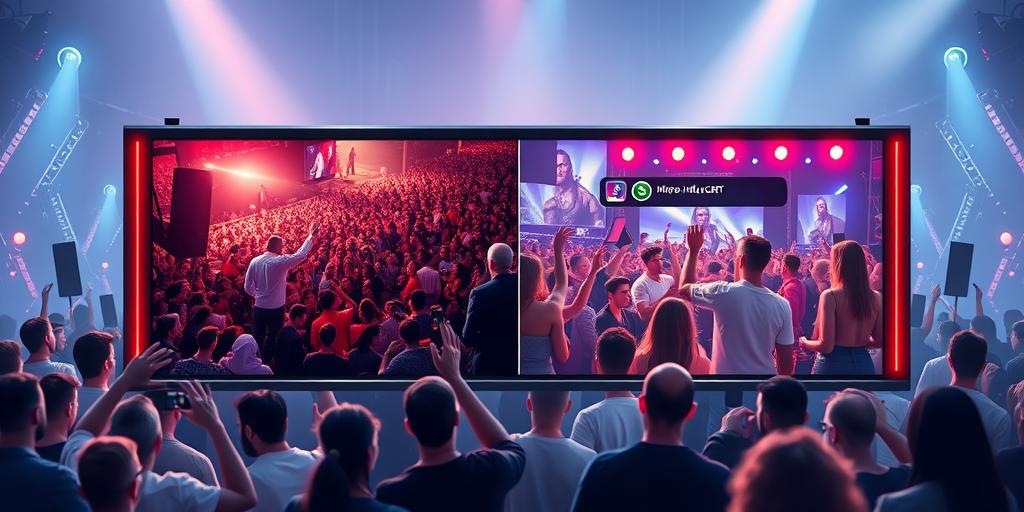Micro-Influencers vs. Macro-Influencers: Who Wins in 2025?
The world of influencer marketing is constantly evolving. As we approach 2025, it’s crucial to understand the shifting dynamics between micro and macro-influencers to make informed decisions about your marketing strategy. This post will analyze the strengths and weaknesses of each, providing insights into which type of influencer might be the better fit for your brand in the coming year.
Defining Micro and Macro-Influencers
- Micro-Influencers: Typically have between 1,000 and 100,000 followers. They often focus on a specific niche and have a high engagement rate with their audience.
- Macro-Influencers: Possess a follower count ranging from 100,000 to millions. They often have a broader reach and may cover a variety of topics.
Reach vs. Engagement
One of the primary differences between micro and macro-influencers lies in their reach and engagement levels:
- Macro-Influencers: Offer a massive reach, allowing your brand to be exposed to a large audience quickly. However, their engagement rates tend to be lower due to the sheer size of their following.
- Micro-Influencers: While their reach is smaller, they often have significantly higher engagement rates. This is because they tend to have a more personal connection with their followers, fostering trust and loyalty.
Cost-Effectiveness
Budget considerations play a crucial role in deciding between micro and macro-influencers:
- Macro-Influencers: Collaborating with macro-influencers can be expensive, potentially requiring a significant portion of your marketing budget.
- Micro-Influencers: Micro-influencers are generally more affordable, making them a viable option for brands with limited budgets. You can often work with multiple micro-influencers for the same price as one macro-influencer, diversifying your reach and message.
Authenticity and Trust
In today’s market, authenticity is key. Consumers are more likely to trust recommendations from sources they perceive as genuine:
- Macro-Influencers: While some macro-influencers maintain authenticity, the sheer volume of sponsored content they produce can sometimes erode trust.
- Micro-Influencers: Micro-influencers often come across as more authentic and relatable, as they typically promote products and services that align with their personal values and interests. This authenticity can lead to higher conversion rates.
Niche Specialization
- Macro-Influencers: While some may specialize in particular areas, many cover a broad range of topics to appeal to a wider audience.
- Micro-Influencers: Typically focus on a specific niche, such as sustainable living, vegan cuisine, or gaming. This specialization allows them to connect with a highly targeted audience that is genuinely interested in their content.
Measuring ROI
Tracking the return on investment (ROI) is essential for any marketing campaign. Both micro and macro-influencer campaigns require careful monitoring and analysis:
- Macro-Influencers: Measuring the impact of macro-influencer campaigns can be challenging due to the wide reach and diverse audience. However, tools like unique discount codes and trackable links can help gauge their effectiveness.
- Micro-Influencers: The more intimate nature of micro-influencer campaigns often makes it easier to track ROI. Engagement metrics, website traffic, and sales conversions can provide valuable insights into their performance.
Which Wins in 2025?
There’s no one-size-fits-all answer to whether micro or macro-influencers will “win” in 2025. The best choice depends on your specific goals, budget, and target audience. However, several trends suggest that micro-influencers will continue to gain prominence:
- Increased demand for authenticity: As consumers become more discerning, they’re increasingly drawn to authentic voices and genuine recommendations.
- Growing importance of niche marketing: Brands are recognizing the value of targeting specific niches to reach highly engaged audiences.
- Budget constraints: Many businesses are seeking cost-effective marketing solutions that deliver measurable results.
In conclusion, while macro-influencers still have a role to play, micro-influencers are poised to become even more valuable in 2025. Their authenticity, engagement, and niche specialization make them a powerful tool for brands looking to connect with consumers on a deeper level. By carefully considering your objectives and target audience, you can leverage the strengths of both types of influencers to create a successful marketing campaign.
